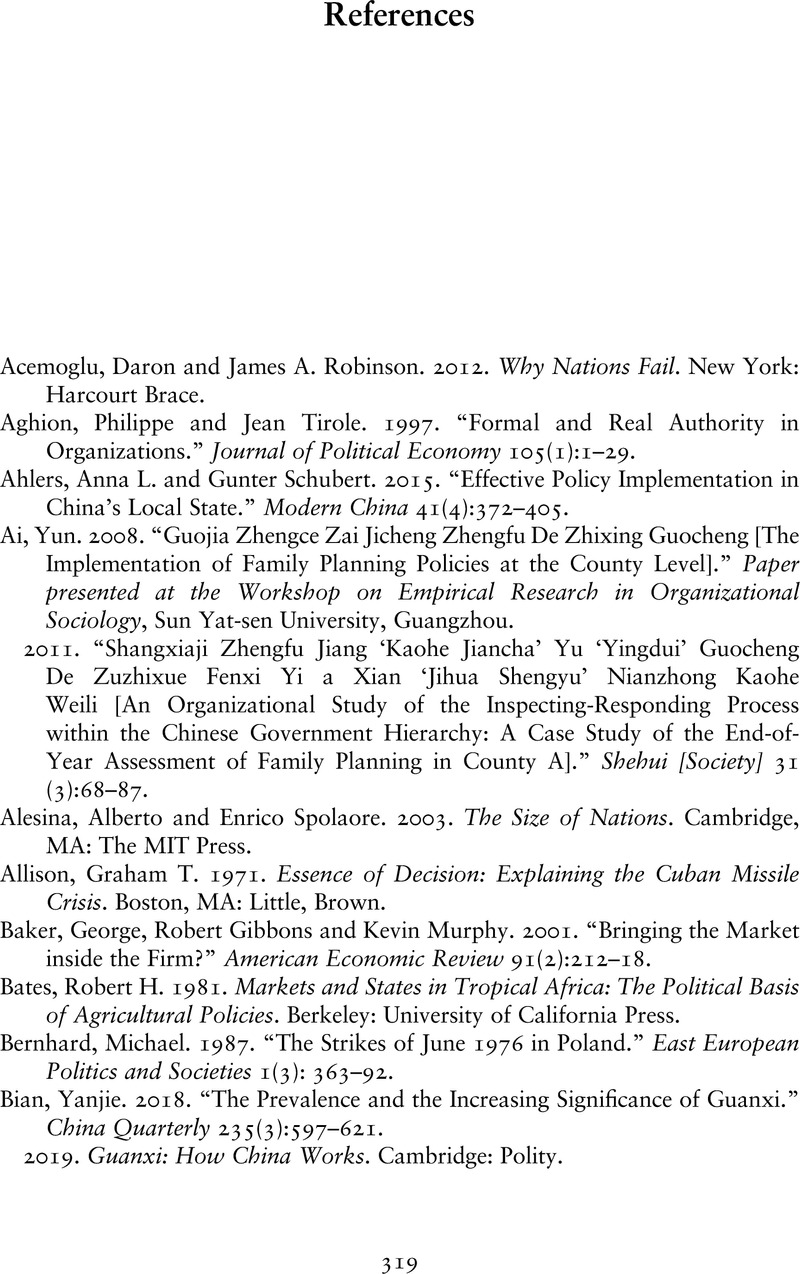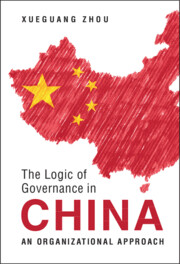Book contents
- The Logic of Governance in China
- The Logic of Governance in China
- Copyright page
- Contents
- Figures and Tables
- Preface
- Abbreviations
- 1 Introduction: The Logic of Governance in China
- Part I The Logic of Governance: Institutions and Mechanisms
- Part II The Logic of Governance and Government Behavior
- Part III The Logic of Governance and Chinese Society
- Glossary
- References
- Index
- References
References
Published online by Cambridge University Press: 16 December 2022
- The Logic of Governance in China
- The Logic of Governance in China
- Copyright page
- Contents
- Figures and Tables
- Preface
- Abbreviations
- 1 Introduction: The Logic of Governance in China
- Part I The Logic of Governance: Institutions and Mechanisms
- Part II The Logic of Governance and Government Behavior
- Part III The Logic of Governance and Chinese Society
- Glossary
- References
- Index
- References
Summary

- Type
- Chapter
- Information
- The Logic of Governance in ChinaAn Organizational Approach, pp. 319 - 338Publisher: Cambridge University PressPrint publication year: 2022

